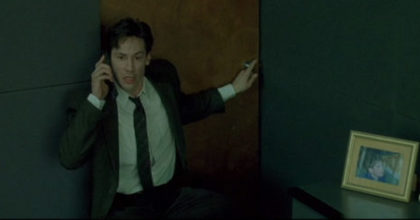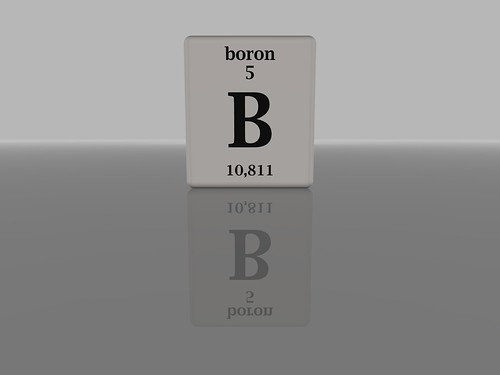
Welcome back to our Sci-Fi Film Festival. This week, I continue my conversation with Mike Beidler about The Matrix as we chat about vocation and Christ figures. You can find the first half of the conversation here, including details about Mike’s own red pill awakening on matters of science and his thoughts on using storytelling as an invitation to deeper reflection.
Andy Walsh: Another facet to the film’s theme of identity relates to work, how we are defined (or not) by our jobs, and the role of choice and self-determination in identity. Did the tension between a work identity and a social or “real” identity resonate for you? Has that changed as you have progressed through your career(s)?
Mike Beidler: The Matrix‘s cyberpunk overtones weren’t so new to me having grown up on films such as Blade Runner, 12 Monkeys, and Robocop during my teen years and early 20s, but it certainly gave me one of the bleakest peeks to date into one possible future should humanity allow its inventions, like artificial intelligence (AI), to supersede us. This potentiality for abandoning our identity as a species—one in which humanity builds forms of AI to do the work God intended for us—worries me (cf. WALL-E). In the film’s Animatrix follow-up, mankind is shown capitulating to the machines, first in terms of giving over their (arguably) God-given manual labor to AI and later in terms of military surrender to a population of self-aware entities previously held in bondage by their creators. This dystopian view of the future is, in my mind, not too far outside the realm of possibility, and to avoid such a future, we must remind ourselves that God’s initial acts within our space-time existence were creative, and, we, as imago Dei creatures, are to follow the Creator’s example (see Genesis 1). Once we abandon the concept of work as a good and necessary endeavor, we risk turning our backs on our identity as sources of progressive creativity and begin the regressive slide from gestalt creatures to being mere “coppertops” used dispassionately by our creations.
Speaking of work, you mention that one of the film’s foci is the issue of identity and the risk of allowing our jobs to define us as individuals. I can understand how easily that can happen, especially if one’s job fails to tap into aspects of our imago Dei status. And even if our work contributions lead to the implementation of creative ideas and results in societal progress, oftentimes we’re never given the benefit of seeing how we fit into the bigger picture. I’m thankful that I’ve never been one to allow my job to define me, and my day-to-day work life is a stark contrast to the things I do after-hours. I’m certainly proud of the contributions I made over a 22-year military career and my follow-on work in the Department of Defense, but those accomplishments aren’t all that I am. I’d say that my accomplishments outside of my career path set me apart as a unique individual. Reflecting on Neo’s plight in The Matrix, Neo’s extracurricular (albeit illegal) activities are what give him a greater sense of fulfillment, even though his true identity remains just out of reach.
AW: I agree that WALL-E‘s vision of complete human dependence on machines is bleak, as is the captivity of The Matrix. I also don’t know how worried I am about either of these visions coming to pass. I think a more likely scenario, and arguably one in which we already live, is where some of us have the opportunity to extend the reach of our creative faculties far and wide with the assistance of machines or technology, leaving fewer opportunities for everyone else to participate in our collective creative enterprises. Whether that means less employment overall or just less satisfying employment, I’m not sure. Either way, helping people to find creative outlets beyond their nominal job seems like it will be essential.

 )
)MB: Watching the film again this morning—and I can’t count how many times I’ve seen it over the last twenty years—I believe I now understand why Neo can survive the enemies’ bullets: He’s made a personal discovery. But Neo’s discovery comes through the combination of two things: revelation and love. After Agent Smith shoots Neo, and Neo flatlines, Trinity refuses to believe Neo is dead because the Oracle told her that she’d fall in love with The One. After Trinity reveals to the still brain-active Neo that he has to be The One, she expresses her love to Neo and kisses him. I would argue that the revelation of one’s true identity isn’t enough to fulfill one’s potential. Love must accompany revelation. Being told that you’re a unique child of God is one thing; being shown that you’re the object of God’s love is entirely another. As Morpheus told Neo, “There is a difference between knowing the path and walking the path.” From a Christian perspective, Jesus’ death on the cross isn’t an identity game-changer until one accepts the love behind the act. In The Matrix, Neo’s love-driven acceptance of his identity and subsequent realization that “there are no bullets” sets him free to pursue his calling as The One. Likewise, our love-driven acceptance of our identity in Christ leads us to realize that we, too, are no longer slaves to ourselves, free to pursue the Holy Spirit’s calling to become more human than human. (That, by the way, is more than just Eldon Tyrell’s motto.) This reminds me of C. S. Lewis’ The Problem of Pain, in which Lewis writes, “To be a complete man means to have the passions obedient to the will and the will offered to God…” (New York: HarperCollins, 1940 [2001], p. 128).
Is this a stretch? Do you have a different approach to answering the question of how Neo physically survives his virtual death?
AW: I don’t think that’s a stretch at all; I think it makes a lot of sense. I’ve always had what I would say is a complementary rather than contradictory reading. I think Neo survives because he is able to integrate his experience in the Matrix with his experience in physical reality. Trinity’s kiss provides an additional sensory input to the ones he is receiving from the machines and allows his mind to recognize that there is life beyond the Matrix. It is the bookend to Morpheus’ “Do you think that is air you are breathing?” And it foreshadows his ability in the sequels to control physical machines and see in the physical world via his connection to the Matrix rather than with his eyes.
MB: Absolutely. It complements quite well my theory of how Neo survived Agent Smith’s assault. It gets me thinking… Like Trinity’s kiss, Jesus’ physical death and subsequent resurrection—which I would argue is solidly rooted in history—allows us the opportunity to realize that there is life beyond the grave. It allows us, as Christians, to integrate our experiences in the physical world (see, hear, taste, and touch) with our spiritual experiences, making us more than just “meat popsicles” (name the movie!). It’s just the “additional sensory input” we need to survive the Enemy’s assaults. It also gives us confidence that the “prayer of a righteous person is powerful and effective” (James 5:16) because of our intimate faith-walk with the Creator (2 Corinthians 5:7).
AW: (“Meat popsicles” is from the greatest movie ever made about boron: The Fifth Element.)
I like this connection; certainly Jesus’ resurrection is rooted in and also transcends our physical reality, pointing to something more beyond.
I don’t want to take anything away from that great and salient insight. At the same time, it got me thinking about the broad tendency among Christians interacting with pop culture to find Jesus and Christ figures everywhere. I think in the case of The Matrix that is entirely fair and most likely intentional on the part of the Wachowskis. Neo does die and come back to life, he is a prophesied Chosen One, and, well, there is a character named Trinity. At the same time, I think it is just as important to acknowledge the differences and the influences of other religions and ways of thinking about the world as a reminder that Neo isn’t precisely an analog to Jesus. For example, in some ways Morpheus also acts as the savior and Neo as his disciple. Neo is the one who we see born again from a fetal state in a pod and down a canal of sorts, along with an umbilical severing.

 )
)MB: I agree that there exists in the evangelical Christian subculture a tendency to “find” Jesus (legitimately or not) in all sorts of media that we enjoy, perhaps as a way to justify our enjoyment. Back in the early days of my involvement with the Star Wars franchise, author Frank Allnutt contacted me out of the blue, hoping that I would advertise on my website Unlocking the Mystery of the Force (Denver: Allnutt Publishing, 1998), a revised edition of his original book The Force of Star Wars (Van Nuys, CA: Bible Voice, Inc., 1977). “Star Wars,” Allnutt claims in the original edition, “is a prophetic parable which, as the remainder of this book will explain, can change your life for the better! You, too, can know and experience the real secret behind the irresistible attraction of Star Wars” (p. 26). A Goodreads reviewer observes that “too many times I got the impression that Frank Allnutt … was trying too hard to make a Christian analogy when one was not intended, nor fitting.” I couldn’t agree more. Allnutt must have also done some self-reflection during the intervening decades because his revised version posits that “while the Force is a composite god of many religions—including Zen Buddhism, Taoism, Islam, Judaism, and Christianity, it does not clearly represent any one deity. Certainly not the God of the Bible.” These kinds of observations do not appear in the original, and Allnutt is quicker to make thoughtful contrasts in the latter edition. (You can read the original for free here, where Allnutt posts a disclaimer that “these books might not reflect Frank Allnutt’s interpretation of Scriptures today.”)
AW: Do you have any other advice for how to be discerning and not go overboard finding Jesus everywhere in stories?
MB: We Christians must be honest about acknowledging The Wachowskis’ many influences, some of which may not be compatible with the Christian faith. But that fact should never dissuade the thoughtful Christian from admiring what heady directors, authors, and lyricists have accomplished through the creative process. Certainly, we can find elements of truth in many non-Christian religions and philosophies, and we would do ourselves a disservice in dismissing anything and everything that is not explicitly biblically-based. Moreover, we do damage to our Christian witness and unwittingly disrespect an artist’s body of work by forcing our own worldviews and paradigms onto those works. Granted, some movies, like The Matrix, invite discourse as a result of their syncretistic approach to storytelling, but I believe there are left and right limits to that discourse. Where those are exactly, I don’t know, but I think that we can do a good job identifying them by using others as sounding boards for our reflections.
AW: Do you think there are deeper reasons why so many stories seem to parallel Jesus’, or is it simply that Christians see everything through the lens of their Christianity, and also in the West, at least, live in a culture where so many storytellers have similar lenses for personal or historical reasons?
MB: In an essay titled “Is Theology Poetry?”, C. S. Lewis wrote, “I believe in Christianity as I believe that the Sun has risen, not only because I see it but because by it, I see everything else.” I don’t think we can help but see everything through whatever lens we’re looking at the time, and that’s not necessarily a bad thing. Our task is to ensure those lenses are as clean as possible and don’t distort whatever it is that we’re viewing. Sometimes that might require us to change lenses completely.
As for the voluminous Christ parallels that we find in so many stories, I lean once again on Lewis, who, in an essay titled “Myth Became Fact,” wrote, “The heart of Christianity is a myth which is also a fact. The old myth of the Dying God, without ceasing to be myth, comes down from the heaven of legend and imagination to the earth of history. It happens—at a particular date, in a particular place, followed by definable historical consequences. We pass from a Balder or an Osiris, dying nobody knows when or where, to a historical Person crucified (it is all in order) under Pontius Pilate. By becoming fact it does not cease to be myth: that is the miracle. ’God is more than a god, not less: Christ is more than Balder, not less. We must not be ashamed of the mythical radiance resting on our theology. We must not be nervous about ‘parallels’ and ‘Pagan Christs’: they ought to be there—it would be a stumbling block if they weren’t.” I think this approach applies equally, in a somewhat retro, backward-looking fashion, to literary and cinematic works written after Christ’s earthly ministry. The Christ story, because it is True Myth, is so compelling that it can’t help but reverberate in even the most pagan of stories.
Mike Beidler is a retired U.S. Navy commander whose combination of military aviation experience and Star Wars fandom pedigree launched him, beginning in the mid-’90s, into a decades-long relationship with numerous Star Wars authors. His direct contributions to the Star Wars universe include work on Tom Veitch’s Dark Empire saga, A. C. Crispin’s Han Solo trilogy, and John Whitman’s Galaxy of Fear series. He has, in a galaxy far, far away, worked as a forensic specialist for a Hutt crime-lord, studied with the B’omarr monks of Tatooine, and hunted down a bounty or two. He has also written about Star Wars and Blade Runner for Sequart Organization. In this galaxy, however, he lives in northern Virginia with his wife and three children and takes advantage of his daily 45-minute commute to/from the Pentagon to read theology and science fiction. Mike is President of the Washington DC chapter of the American Scientific Affiliation (ASA), a contributing writer to BioLogos, and a member of the both the American Association for the Advancement of Science (AAAS) and the National Center for Science Education (NCSE).
Andy has worn many hats in his life. He knows this is a dreadfully clichéd notion, but since it is also literally true he uses it anyway. Among his current metaphorical hats: husband of one wife, father of two teenagers, reader of science fiction and science fact, enthusiast of contemporary symphonic music, and chief science officer. Previous metaphorical hats include: comp bio postdoc, molecular biology grad student, InterVarsity chapter president (that one came with a literal hat), music store clerk, house painter, and mosquito trapper. Among his more unique literal hats: British bobby, captain’s hats (of varying levels of authenticity) of several specific vessels, a deerstalker from 221B Baker St, and a railroad engineer’s cap. His monthly Science in Review is drawn from his weekly Science Corner posts — Wednesdays, 8am (Eastern) on the Emerging Scholars Network Blog. His book Faith across the Multiverse is available from Hendrickson.

Leave a Reply